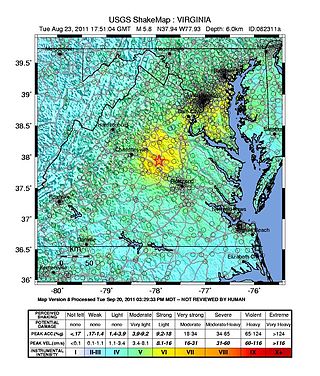
Østfold is a county in Eastern Norway, which from 1 January 2020 to 31 December 2023 was part of Viken. Østfold borders Akershus and southwestern Sweden, while Buskerud and Vestfold are on the other side of Oslofjord. The county's administrative seat is Sarpsborg. The county controversially became part of the newly established Viken County on 1 January 2020. On 1 January 2024, Østfold was re-established as an independent county, however without the former municipality of Rømskog, which was amalgamated with the Akershus municipality Aurskog-Høland in 2020.

Halden, between 1665 and 1928 known as Fredrikshald, is both a town and a municipality in Østfold county, Norway. The municipality borders Sarpsborg to the northwest, Rakkestad to the north and Aremark to the east, as well as the Swedish municipalities Strömstad, Tanum and Dals-Ed respectively to the southwest, south and southeast.

Horten is a municipality in Vestfold county, Norway. It is located in the traditional district of Jarlsberg. The administrative centre of the municipality is the town of Horten. Other population centers in Horten Municipality include the town of Åsgårdstrand and the villages of Nykirke, Skoppum, and Borre. The municipality is located on a peninsula along the Ytre Oslofjord.

(Norwegian) or Rosse (Southern Sami) is a municipality in Trøndelag county, Norway. The administrative centre of the municipality is the town of Røros. Some of the villages in Røros include Brekken, Glåmos, Feragen, Galåa, and Hitterdalen.

The Østfold Line is a 170-kilometer (110 mi) railway line which runs from Oslo through the western parts of Follo and Østfold to Kornsjø in Norway. It continues through Sweden as the Norway/Vänern Line. The northern half is double track and the entire line is electrified. It serves a combination of commuter, regional and freight trains and is the main rail corridor in the south of Norway. The Follo Line runs parallel to the Østfold Line in tunnel. The Eastern Østfold Line branches off at Ski Station and runs 79 kilometers (49 mi) before rejoining at Sarpsborg Station.
The 2006 Gulf of Mexico earthquake occurred in the eastern Gulf of Mexico on September 10 at . The intraplate earthquake measured 5.9 on the moment magnitude scale and its epicenter was located about 250 miles (400 km) west-southwest of Anna Maria, Florida. The event was felt throughout much of the Gulf Coast of the United States and was the second earthquake of magnitude 5 or greater in the Gulf during 2006. Felt intensities, as measured on the Mercalli intensity scale, were as high as IV (Light) in Florida, with parts of Georgia at III (Weak).

Idd is a parish and former municipality in Halden, Østfold county, Norway.

Raet is the largest terminal moraine in Scandinavia. It was formed during the end of the last glacial period, 12,800–11,500 years ago, in one of the latest advances of the glaciers. The moraine system extends from Finland, where it is known as Salpausselkä, through Sweden into Østfold in southeast Norway, across the Oslofjord and around the tip of southern Norway, where Raet National Park is located in Agder, then north to northern Norway and the Kola Peninsula in northwest Russia. In several regions there is more than one moraine, an older on the coast or underwater and a younger further inland. The moraines have created numerous lakes by damming watercourses, and several stretches have been used as roads since ancient times. In Norway, both Raet National Park and Jomfruland National Park are along the moraine.

The Diocese of Oslo is an exempt Latin Church diocese of the Catholic Church located in the city of Oslo in Norway.
Halden Arbeiderblad is a Norwegian language local newspaper published in Halden, Norway.

The 1968 Illinois earthquake was the largest recorded earthquake in the U.S. Midwestern state of Illinois. Striking at 11:02 a.m. on November 9, it measured 5.3 on the Richter scale. Although no fatalities occurred, the event caused considerable structural damage to buildings, including the toppling of chimneys and shaking in Chicago, the region's largest city. The earthquake was one of the most widely felt in U.S. history, largely affecting 23 states over an area of 580,000 sq mi (1,500,000 km2). In studying its cause, scientists discovered the Cottage Grove Fault in the Southern Illinois Basin.

The Western Quebec Seismic Zone is a seismically active area in the Ottawa Valley in Eastern Ontario and Western Quebec. The zone stretches from Montreal to Témiscaming and from Cornwall up along the Laurentian Mountains.
The 1867 Manhattan earthquake struck Riley County, Kansas, in the United States on April 24, 1867, at 20:22 UTC, or about 14:30 local time. The strongest earthquake to originate in the state, it measured 5.1 on a seismic scale that is based on an isoseismal map or the event's felt area. The earthquake's epicenter was near the town of Manhattan.

The 1916 Irondale earthquake struck in the north-central region of the U.S. state of Alabama on October 18. The strongest earthquake in state history, it registered an estimated Richter scale magnitude of 5.1 and resulted in minor damage. Damage was limited to Shelby and Jefferson counties and reached its maximum severity near the epicenter in the city of Irondale, including cracked windows, fallen chimneys, and dried-up wells. While there were no fatalities, the earthquake spawned widespread panic, prompting alarmed workers to evacuate tall buildings.

On August 23, 2011, a magnitude 5.8 earthquake hit the Piedmont region of the U.S. state of Virginia at 1:51:04 p.m. EDT. The epicenter, in Louisa County, was 38 mi (61 km) northwest of Richmond and 5 mi (8 km) south-southwest of the town of Mineral. It was an intraplate earthquake with a maximum perceived intensity of VIII (Severe) on the Mercalli intensity scale. Several aftershocks, ranging up to 4.5 in magnitude, occurred after the main tremor.
The 1993 Klamath Falls earthquakes took place in Klamath Falls, Oregon, beginning on Monday, September 20 at 8:28 p.m. The doublet earthquake registered respective magnitudes of 6.0 and 5.9 on the moment magnitude scale. The earthquakes were located at a depth of 5.6 miles (9 km) and tremors continued to be felt more than three months after the initial shocks.
The 2003 Fiordland earthquake struck the remote region of Fiordland in the South Island of New Zealand on 22 August 2003, at 12:12 am NZST. The epicentre was 12 kilometres (7.5 mi) deep, and was thought to be near Secretary Island at the entrance to Doubtful Sound. At 7.2 Ms magnitude, it was one of the largest quakes in the country for some time, and was the largest shallow quake since the 1968 Inangahua earthquake. There was an aftershock two hours later at 2:12 am, followed over several days by frequent small tremors; two months after the earthquake, there had been 8,000 aftershocks.

The Quake is a 2018 Norwegian disaster film directed by John Andreas Andersen. It is the sequel to The Wave and was released in Norwegian theaters on 31 August 2018.
At 7:09 AM MDT on March 18, 2020, a 5.7 magnitude earthquake hit Salt Lake City, Utah, United States, with an epicenter 6 km (3.7 mi) north-northeast of Magna, Utah, beneath the site of the planned Utah Inland Port. It was the first major earthquake to occur within the Salt Lake Valley since the city was founded, the state's strongest earthquake since the 1992 St. George earthquake, and the first earthquake of comparable magnitude to occur near Salt Lake City since 1962, when a magnitude 5.0 earthquake struck a similar location in Magna.















